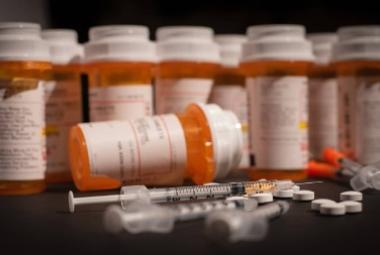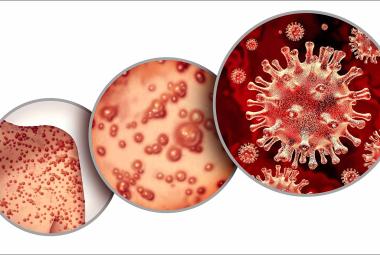This section covers OTC drugs used for acne.
A typical pharmacy has shelf after shelf of medicines that can be sold without a doctor’s prescription. These are called over-the-counter (OTC) drugs. Many concerned mothers wonder about the safety of these medications while they are breastfeeding a baby. While there are many brands and varieties of drugs on the market, there is a relatively small list of active ingredients in all those products. Careful review of the product label is an essential part of responsible and safe use of these medicines. Some preparations have more than one active ingredient.
(For other ailments, see our sections on colds and allergies, sleep aids, and GI complaints.)
In general, topical OTC medications act only down to the deep layers of the skin and are poorly absorbed into the blood stream. Low blood levels means even lower milk levels. However, the child should not be exposed to medication residues on the skin or clothing.
Successful acne treatment always starts with good skin care.
Benzoyl peroxide: This medication has anti-inflammatory and anti-microbial properties. By itself, benzoyl peroxide is an effective treatment for mild forms of comodonal acne1 (forming white-heads and black-heads). It also complements prescription antibiotics for use in more severe forms of acne.2 There are no good studies on benzoyl peroxide in pregnant or breastfeeding women. However, most tissues in the body contain enzymes that break down peroxide compounds and any of this medication that is absorbed would be rapidly destroyed. Topical benzoyl peroxide theoretically represents the safest choice for acne treatment in pregnant or breastfeeding women. Common trade names: Acne 10 Gel, Banzagel, Benzac, Benziq.
Salicylic acid (0.5 to 2%):This keratolytic medication erodes the “cement” between skin cells, allowing extra cells to be washed away. It also has an anti-inflammatory effect. Although the concentration of salicylic acid in OTC preparations is low, phase I studies have demonstrated that up to 25% of the drug may be absorbed into the blood.3 There are no good studies on topical salicylic acid in pregnant or breastfeeding women. Other, similar drugs appear in breastmilk and can cross the placenta. Long-term salicylate use may be associated with stillbirth, postpartum bleeding, and low birth weight.4 Heavy use of this product is not recommended during the last trimester as it can increase bleeding risk in both mother and baby.4, 5 Common trade names: Avosil, Compound W, Duofilm, Mediplast, Occlusal-HP, Sal-Plant Gel, Stri-Dex, Trans-Ver-Sal.
Lactic acid and glycolic acid:These medications help peel away extra skin and reduce skin darkening after acne resolves. Both substances can be up to 50% absorbed through the skin. However, they are both normal byproducts of cellular metabolism that are naturally present in significant quantities in the fetus and neonate. Animal studies have not shown any increase in birth defects.6 Commonly marketed in “At-home chemical peel kits.”
Tee tree oil: This essential oil is extracted from the leaves of Melaleuca alternifolia. It has recently gained popularity for its ability to exert antimicrobial effects without irritating sensitive tissues. No studies have been done to assess its safe use in pregnant or breastfeeding mothers. Some case studies have been published describing tea tree oil toxicity in toddlers who ingested a significant quantity. This product should not be consumed orally or used on the nipple. Common trade name: Melaleuca oil.
James Abbey, MD
InfantRisk Center
References:
1. Mills OH, Jr., Kligman AM, Pochi P, Comite H. Comparing 2.5%, 5%, and 10% benzoyl peroxide on inflammatory acne vulgaris. International journal of dermatology. Dec 1986;25(10):664-667.
2. Seidler EM, Kimball AB. Meta-analysis comparing efficacy of benzoyl peroxide, clindamycin, benzoyl peroxide with salicylic acid, and combination benzoyl peroxide/clindamycin in acne. Journal of the American Academy of Dermatology. Jul 2010;63(1):52-62.
3. Pharmaceutical manufacturer prescribing information. 2003.
4. Corby DG. Aspirin in pregnancy: maternal and fetal effects. Pediatrics. Nov 1978;62(5 Pt 2 Suppl):930-937.
5. Rumack CM, Guggenheim MA, Rumack BH, Peterson RG, Johnson ML, Braithwaite WR. Neonatal intracranial hemorrhage and maternal use of aspirin. Obstetrics and gynecology. Nov 1981;58(5 Suppl):52S-56S.
6. Colomina MT, Gomez M, Domingo JL, Llobet JM, Corbella J. Concurrent ingestion of lactate and aluminum can result in developmental toxicity in mice. Research communications in chemical pathology and pharmacology. Jul 1992;77(1):95-106.







